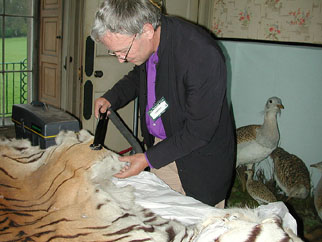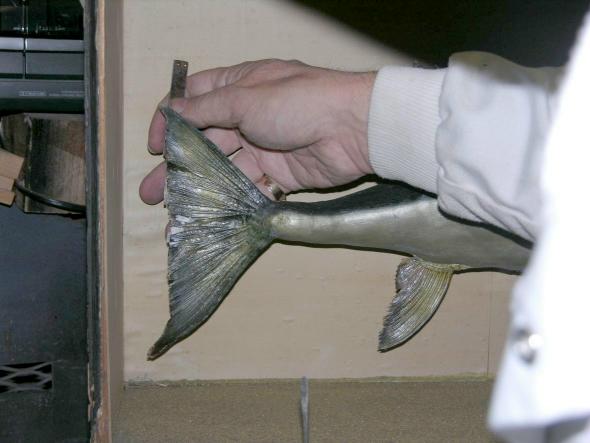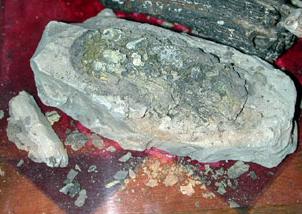 Natural-History-Conservation.com
Natural-History-Conservation.com
Projects undertaken for National Trust properties in 2004 by Simon Moore
 Natural-History-Conservation.com
Natural-History-Conservation.com
Projects undertaken for National Trust properties in 2004 by Simon Moore


Now that conservation and curation-related matters are correctly prioritised and that House staff are apprised of deteriorative agents, pest and other related incidents are relatively scarce. However, even with the best will in the world, wild birds can fall down chimneys and die, their corpses giving rise to an eventual pest outbreak. Now that COSHH has banned the use of nearly all insecticides, proper training and subsequent vigilance are paramount.

 In 2004 Simon carried out survey work for the National Trust largely in the South West
in properties in Devon and
Cornwall but also in Wales, and a training day for staff in this region was given by Simon
in early 2004 (see picture to the right).
In 2004 Simon carried out survey work for the National Trust largely in the South West
in properties in Devon and
Cornwall but also in Wales, and a training day for staff in this region was given by Simon
in early 2004 (see picture to the right).
Properties visited in this region in 2004 included A la Ronde – an important if small property owned by the
Parminter sisters in the 18th century with a fascinating collection of shells and other more unusual objects, especially important
as it shows the female aspect of Grand Tour collecting. Also Antony House, containing a varied
collection of artiodactyl head trophies
and Arlington Court with its amazing diversity of collected materials. In the summer he
visited Castle Drogo, Watersmeet,
Knightshayes Court (a must for enthusiasts of Victorian gothic art), Cotehele, Saltram
and Lanhydrock which have fine
collections of artiodactyl trophies and more local animals
including choughs, some of which are in need of conservation.


Calke Abbey in Derbyshire contains the largest collection of Natural History specimens
of any National Trust
property
and requires at least one visit per year. Simon's assessment visit this year unearthed some fossils requiring
treatment including an extremely fragile fossil pine cone.



Simon continues to identify and curate the large Iliffe shell collection at Basildon Park, and hopes to see the near completion of this work in 2005 so that visitors can clearly see the identity of all the displayed shells, and researchers will be able to find out more about them from the collection’s renewed database. He has also reported on the Natural History specimens at Benthall and Attingham in the Midlands.



The tail of this barbel was severely damaged and needed repairing with japanese tissue
and then colouring. Details show before and after conservation.





For more details about what we can do for you, or for a quote, please contact:
enquiries@natural-history-conservation.com
We are members of the United Kingdom Institute for Conservation of Historic and Artistic Works